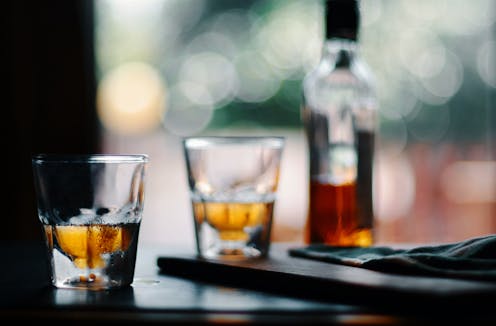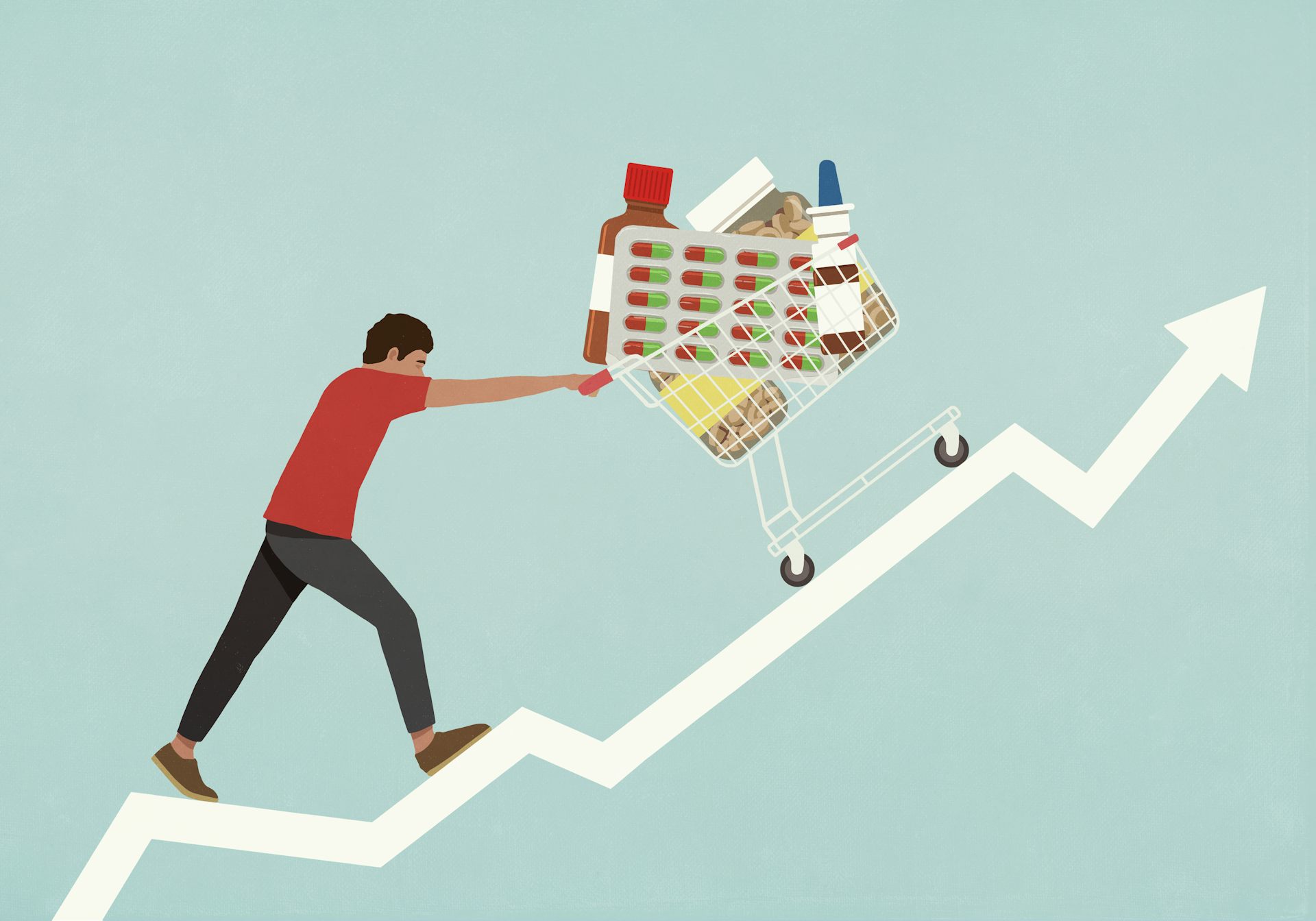Alcohol use disorder can be treated with an array of medications – but few people have heard of them
Alcohol is responsible for more deaths than overdoses from opioids and all other substances combined, yet less than 10% of people with alcohol use disorder receive treatment.

More than 29.5 million Americans ages 12 and up had alcohol use disorder – the medical term for the disease commonly known as alcoholism – in 2022, when the most recent national data was published.
The condition is characterized by a pattern of heavy alcohol consumption with loss of control over drinking despite negative social, occupational or health consequences.
Deaths from excessive alcohol use have sharply increased in recent years, to 178,000 in the United States in 2021, up from 138,000 five years earlier. The greatest increase occurred during the first year of the COVID-19 pandemic.
Alcohol is responsible for more deaths than overdoses from opioids and all other substances combined, and it accounts for 1 in 5 of all deaths of people ages 20 to 49. Alcohol-associated deaths occur from a variety of causes. These include alcohol’s long-term effects such as cancer, liver disease and heart disease as well as its short-term effects such as motor vehicle accidents, poisoning and suicide.
Many effective treatments exist for alcohol use disorder, including psychotherapy, peer support groups such as Alcoholics Anonymous and SMART Recovery, and medications. I’m a clinical psychologist and neuroscientist, and for the past 15 years, my research has focused on evaluating medications for alcohol use disorder.
Over that time, I have seen substantial changes in the scientific understanding and treatment of alcohol use disorder. I am optimistic that our existing medications can reach more people with this condition, that we can better target these medications to the patients most likely to benefit from them, and that new effective medications are on the horizon.
Alcohol use disorder is vastly undertreated
With the onset of the opioid epidemic in the past two decades, medications for opioid use disorder, such as methadone and buprenorphine, have entered the public consciousness. But medications for alcohol use disorder are less familiar to the public and used less frequently.
While 22% of patients with opioid use disorder receive medications to treat it, the rate of medication treatment for alcohol use disorder is much lower. Less than 10% of people with alcohol use disorder receive any treatment in any year, and less than 3% receive medications for it.
Regrettably, many people with alcohol use disorder don’t recognize the severity of their drinking and its effects on others, and many do not realize that effective medications are available.
Medications approved for alcohol use disorder
As of May 2024, three medications have been approved by the Food and Drug Administration for treatment of alcohol use disorder. The oldest and best known of these medications is disulfiram – sold under the brand name Antabuse – a compound that was first used in the American rubber industry.
In 1937, a rubber plant physician observed that workers exposed to disulfiram displayed adverse reactions to alcohol, including nausea, vomiting and tachycardia – meaning fast heart rate. Subsequent research determined that disulfiram inhibits alcohol metabolism, leading to the accumulation of acetaldehyde. This causes many of the symptoms of a hangover immediately after alcohol ingestion, making drinking unpleasant.
Disulfiram is effective for reducing drinking but must be taken daily by mouth, which limits its utility if patients do not take it on this schedule.
A more recently FDA-approved – and more effective – medication for alcohol use disorder is the opioid receptor antagonist naltrexone. It blocks opioid receptors and prevents opioids – both “exogenous” opioid drugs and “endogenous” opioids produced in the brain – from activating these receptors.
It might be surprising that an opioid receptor antagonist is effective for treating alcohol use disorder. But, in fact, opioids play a key role in alcohol’s effect on the neurotransmitter dopamine, which underlies the pleasurable effects of alcohol and most other drugs.
Naltrexone reduces dopamine release from alcohol, blocking some of the pleasurable effects of drinking. Importantly, it also reduces alcohol craving, likely through its effects on dopamine that is released in response to cues, such as the sight, smell and taste of alcohol. Naltrexone is effective for reducing heavy drinking but less effective for complete abstinence from alcohol.
Naltrexone can be taken daily by mouth or injected once per month, making it a better option for patients who might struggle to take a daily oral medication. Interestingly, it also reduces heavy drinking when taken sporadically prior to anticipated drinking occasions. A similar opioid antagonist, nalmefene, is approved in the European Union for alcohol use disorder.
The third FDA-approved medication, acamprosate, also reduces alcohol cravings, but its molecular effects are less well understood. Results from European clinical trials have shown that it can help people reduce their drinking, but results from U.S. trials have been less positive.
‘Off-label’ medications
Several medications have demonstrated encouraging effects on drinking in randomized controlled trials but are not yet FDA-approved for alcohol use disorder. Instead, they are used “off-label,” meaning that physicians use their discretion to prescribe them for an unapproved indication. The most promising medications are approved for treating epilepsy.
These medications appear to be effective for alcohol use disorder in part by reducing symptoms of alcohol withdrawal, a dangerous condition that develops among some people following the abrupt cessation of heavy drinking. In its most severe form, alcohol withdrawal causes hyperreactivity of the autonomic nervous system, auditory and visual hallucinations and seizures. These medications include gabapentin, topiramate and baclofen, the latter of which is approved in France for alcohol use disorder.
Precision medicine
Regrettably, both the FDA-approved and off-label medications for alcohol use disorder have relatively small effects on alcohol consumption. On average, these medications will cause people who drink heavily – meaning four or more drinks in a day for women, five or more for men – most days of the week to do so one or two days less per week. However, this average varies significantly between patients – some see a large effect, and some see no benefit.
An important recent focus of research, funded by the National Institute on Alcohol Abuse and Alcoholism, on alcohol use disorder medications has been the application of a “precision medicine” approach to identify patients for whom a particular medication is more likely to have a large effect.
For example, my work and others’ has found that people who both drink heavily and smoke cigarettes are more likely to benefit from naltrexone. This may be because the additive effects of alcohol and nicotine on dopamine release in reward-related brain regions makes these people particularly likely to benefit from a medication that can block dopamine release by alcohol. Naltrexone also appears to be more effective among people whose drinking is motivated by a desire for the positive, rewarding effects of alcohol, consistent with its ability to reduce these effects.
Finally, recent research suggests that gabapentin may be more effective in people with a history of alcohol withdrawal. Genes that predict medication effects are also being evaluated, but to date none has had consistent effects across studies.
On the horizon
The search for robustly effective medications to treat alcohol use disorder is a significant area of current research. The National Institute on Alcohol Abuse and Alcoholism funds a multisite research program, in which my laboratory participates, that has evaluated a number of promising candidate medications in Phase 2 and Phase 3 clinical trials. The FDA typically requires medications to demonstrate efficacy in at least two Phase 3 trials prior to approval for a new purpose.
A resurgence of interest in psychedelic compounds in psychiatry has led to preliminary data suggesting that psilocybin, the active ingredient in hallucinogenic mushrooms, may reduce drinking when paired with psychotherapy.
Finally, anecdotal reports of reduced interest in alcohol among patients taking GLP-1 agonists – medications that mimic the action of glucagonlike peptide 1 (GLP-1), a hormone produced by the body after eating – have prompted intense interest in the potential of these medications to treat alcohol use disorder. These include Ozempic and Wegovy, which are FDA-approved for diabetes and weight loss. My laboratory and several others are conducting trials of these medications, with results expected in the next one to two years.
Alcohol use disorder is a devastating condition for which better treatments are desperately needed. Approved and off-label medications are currently available. As research into new medications continues, patients should seek providers who use evidence-based treatments to have the greatest likelihood of success in gaining control over their drinking.
Joseph P. Schacht receives funding from the National Institute on Alcohol Abuse and Alcoholism and the National Institute on Drug Abuse. He has received study medication from Bausch Health.
Read These Next
School shootings dropped in 2025 - but schools are still focusing too much on safety technology inst
Prevention methods like lockdown drills do not account for many scenarios, including the likely case…
My prescription costs what?! Pharmacists offer tips that could reduce your out-of-pocket drug costs
High prescription drug costs are leaving many patients frustrated and unable to afford their medications.
Epstein’s victims deserve more attention than his ‘client list’
Powerful men connected to Jeffrey Epstein are named, dissected and speculated about. The survivors,…





